
As the spacecraft approaches the planet, things seem quite familiar. Sunlight glints off an expanse of blue ocean, and white clouds are corralled by gusts of wind. But a closer inspection is jarring - the continents are in the wrong places. That's because, for all its similarities, this isn't Earth. Instead, we're looking at the first historic images sent back of another world orbiting a star far beyond the Sun. In days gone by, such ideas were little more than a pipe dream. But the tide is turning.
In 2016, the late Stephen Hawking and billionaire Yuri Milner launched their Breakthrough Starshot project to an enthralled press conference. The goal is to one day fire lasers at sails strapped to tiny stampsized spacecraft, launching a swarm of explorers to Alpha Centauri - the nearest star system to Earth. If successful, the journey might only take a few decades. Such interstellar travel is no longer an absurd idea.
As things stand, we only have two distant emissaries of humankind that have departed the planetary system in which we reside: Voyager 1 and 2 - the probes sent to explore the outer planets in 1977. In 2012, measurements of the solar wind suggested Voyager 1 had left the magnetic influence of the Sun - one way of arguing it had departed the Solar System - with its twin reaching the edge in 2018. Yet they are nowhere near the next solar system. That's the problem with space - it really lives up to its name. A trip to the Alpha Centauri system requires us to travel a staggering 4.37 light years. At the speed of Voyager 1 it would take at least 30,000 years to cover that distance.
That's why Hawking and Milner turned to an alternative solution. The goal is to take advantage of advances in technology miniaturisation. "We're already seeing one-tonne spacecraft being scaled down to a one-kilogram CubeSat," says Colin McInnes from the University of Glasgow. "You can imagine a similar device in the future weighing a gram."
This story is from the Issue 160 edition of All About Space UK.
Start your 7-day Magzter GOLD free trial to access thousands of curated premium stories, and 9,000+ magazines and newspapers.
Already a subscriber ? Sign In
This story is from the Issue 160 edition of All About Space UK.
Start your 7-day Magzter GOLD free trial to access thousands of curated premium stories, and 9,000+ magazines and newspapers.
Already a subscriber? Sign In
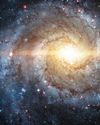
MYSTERIES OF THE UNI WHERE ARE ALL THE SPIRAL GALAXIES?
There are far fewer spiral galaxies than elliptical ones in the Supergalactic Plane, and scientists are keen to discover why
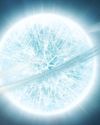
ZOMBIE STARS
+10 OTHER TERRIFYING SPACE OBJECTS

HOW TO BEAT LIGHT POLLUTION
Thought it was impossible to observe the wonders of the night sky from towns and cities? Think again. Follow our tips and tricks on successfully observing through sky glow
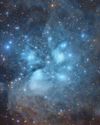
15 STUNNING STAR CLUSTERS
These beautiful stellar groupings are spattered across the cosmos

Eileen Collins "It was a difficult mission...we were the first to see Mir"
Having served as both the first female pilot and first female commander of NASA's Space Shuttle, Collins boosted the involvement of women in space exploration to a whole new level

MARS LEAKS FASTER WHEN IT'S CLOSER TO THE SUN
The Red Planet has lost enough water to space to form a global ocean hundreds of kilometres deep
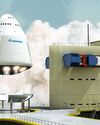
FUTURE TECH KANKOH-MARU
This ambitious reusable spacecraft will be capable of taking 50 people to and from orbit

THE FINAL FRONTIER
Beyond the reach of the Sun is a fascinating region of the cosmos that were only just beginning to explore
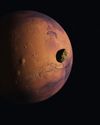
A long-lost moon could explain Mars' weird shape and extreme terrain
A long-lost moon could explain why Mars is so different from the other rocky planets in the Solar System. Today Mars has two tiny moons.
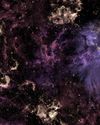
A sprinkling of cosmic dust may have helped kick-start life on Earth
Cosmic dust may have helped kick-start life on Earth. New findings challenge a widely held assumption that this wasn't a plausible explanation.